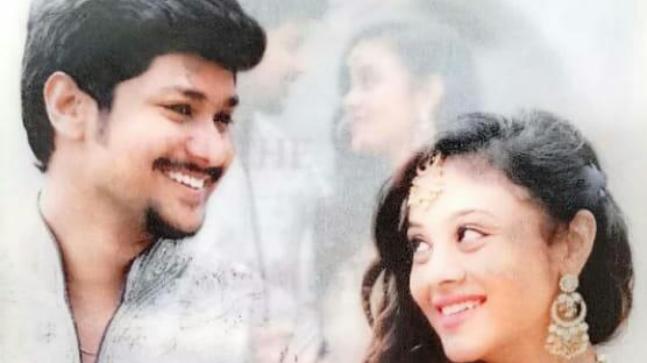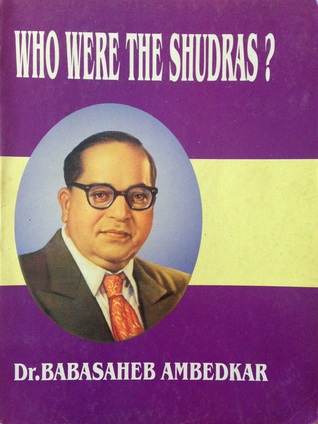What’s common between a fisherman’s son Parshya from Nagraj Manjule’s film, Sairaat and the real life of a 24-year-old Pranay, a Bahujan from Mala community from Telengana, Hyderabad who was hacked to death in front his 21-year-old pregnant wife who belonged to a caste Hindu from Vaishya caste?
It was love (exogamy – transgressing a profane religious Hindu order) at first and identity (social location – lower caste man marrying an upper caste woman) every other second; a looming fear of punishment thereafter and eventually a ‘ritual sacrifice’ – the shedding of the blood – in transgressing; breaking the sacred law of a Brahmin religion. ‘Sin’ had been committed, pollution had occurred; and the ‘deed’ had to be atoned one-way or other. By way of murder, by way of teaching a lesson through sacrifice of a human life, by way of once again attempting to show that love is lesser than hatred; by once again instilling fear just as criminals do; and show caste superiority and patriarchy. Power is insidious and caste and them are synonymous to Indian social structure. If much could be said about it, it would be dictates’ of a Brahmin dharma as Manu has defined for a Hindu society.
“No time should a woman be allowed independent existence. In childhood she must be under her father, after marriage under her husband, and in old age under her son, because she is unworthy of freedom (Na stree swatantryam arhati)
Manu considered women lesser beings and equated them to that of a ‘Shudra’ and the beast of burden. In his seminal work, ‘Who were the Shudras?’Ambedkar has attempted to explain the formation of the Shudras; the lowest caste in hierarchy of a Hindu caste system. Visibly the power trip of this religious fanaticism is so high, that it demands human sacrifice to perpetuate their play of caste superiority and regrettably the sacrifice is always Bahujan body.
Bahujan comes from Buddha’s “Bahujan hitay, bahujan sukhay.” Bahujan (Scheduled Castes, Scheduled Tribes and Other Backward Classes) is a political identity that Saheb Kanshi Ram, a name to reckon with, since Ambedkar, in Bahujan movement; essentially a ‘self-respect’ movement unified the 85% of marginalized people of India into one identity. He converted Buddha’s social, material and spiritual philosophy into a political identity. But the same Bahujans’s lives operate under the hegemony of 15% upper castes in India – in the ascending order of caste varna it would be Vaishya, Kshatriya and at the top, Brahmins. These twice born castes fill almost all the positions of power in the government, law & order, judiciary, academia, media, art and cinema besides business and religion.

The case of Pranay or many others like him who had an inter caste marriage are perceived to have actually transgressed a Brahmin order where caste pollution has occurred, therefore a punishment would follow. This punishment of leading to the death of a Bahujan man’s body from lower caste community is a result of an interaction with and ‘upper-caste female body’ in essence.
Caste pogroms feature two forms of hate – collective humiliation and economic destruction. In the first case, the women are stripped, paraded naked, raped and molested in public. Recall Bhanwari Devi, Phoolan Devi, Priyanka and Rekha Bhootmange, Delta Meghwal, Kathua victim – gang raped in a temple premise, Unnao victim – whose father is killed in police custody, Saharanpur violence – women are lynched and physically attacked by upper caste Thakur men. Second, qualified /employed youth are targeted and killed and their basis of livelihood or survival are attacked by upper caste people. Assets like household goods and vehicles are damaged, houses are burnt, and wells poisoned. Pranay was the victim of second kind of caste violence.
So if we try to understand ‘body’ as a ‘site’ representative of a community, this system works to perpetuate the terrorizing of the Othered population – the ‘Untouchables and the poorer Most Backward Castes (MBCs)’ essentially a ‘Bahujan body’ – by targeting the body of the woman as representative of the community, which needs to be “taught a lesson”.
The process is however reversed if a male from a lower caste dares to romantically interact with a caste woman, as due to religious transgression; it often results in death for sure and that’s what has been happening with Bahujan men in India. They do this not because they love or honour their women more, but because the honour of their community resides in the woman’s body and as Ambedkar said, ‘Women are the gateways of caste-system’, this system of caste perpetuation continues by controlling the sexuality of a woman and thus perpetuating purity and superiority of a Brahmin caste order.’
Honour is valued higher than the life or the body of the individual as clear by the numerous (dis) honour killings and the latest victim was Pranay. It was forbidden by convention (a cousin, same village or gotra, or lower or other caste’) for Amrutha; being a woman from upper caste to fall in love with a lower caste man. This transgression demanded a sacrifice and the sacrifice was life of Pranay.
British archaeologist, R Campbell Thompson maintains that religious institutions have been molded by belief in evil spirits rather than the faith in good divinities. This ritual offering of a human body– is a ‘rite of passage’ to recruit religious loyalties, as was done in many ancient civilizations such Babylonian, Hebrew and Hindu (cited in Smith 1909).
Doesn’t this totemic sacrament- that is, the ‘slaying of an animal’ regarded as divine in order that the community may partake of the divine life sound familiar to that totemic sacrament of slaying of (men/women of) Bahujan bodies who transgressed the divine order of Brahmin religion (breach of a taboo of marrying outside caste) via exogamy regarded as ‘profane’ since it broke the sacred order of Brahmanism.
The position and status of subaltern Indian woman by situating the entire question of social exclusion’ in Indian society in the context of ‘who is a citizen?’ can be understood by analyzing ‘the rights of a citizen’ in ancient Greece to that of Indian culture. Behind questions of identity, a patriarchal power curtain is unfurled. The citizen was not everyman, the common man or every individual. The citizen was a male of a certain age, “free”, that is, not a slave, for slavery was a fact of life in ancient Greece. This is similar to the status of women in patriarchal societies, in this case a Brahmanical society; because in here women are not only considered a burden but that their fate is in the hand of a Brahamanical man. A collective identity of a dogmatic patriarchal ideology, that denies all women the capacity or legal status to make independent decisions. Powerful males and females driven by a superiority trip of Brahmanical patriarchy make decisions for them. In other words, they are “Othered” from making decisions, even about their own lives.
A similar picture of this Brahmancial patriarchy is seen in the way Indian media reports of Bahujan issues – rape, threat, death, violence, caste atrocities, achievements. Socially regulated media industry in India is very particular in the construction, transformation and commoditisation of the subjects of coverage. This can be learnt by the exclusive nature of reportage about Bahujan bodies.
Kharilanji is a village in the Mohadi Taluk of Bhabdara district, Maharashtra. On 29th September 2006, Bhaiyyalal Motmange’s entire family – wife Surekha (40), sons Roshan (21) and Sudhir (19) and daughter Priyanka (17) were lynched by a mob of caste Hindus of the village. It is noted as an horrendous expression of sadism that combines gang-rape, public humiliation and torture. It was a diabolic-moral policing act by the caste-Hindu against the illicit relationship between mother (Surekha) and a man (Siddharth Gaajbhiye) (Teltumbde 2008 cited in Patil 2011)
Is Indian media projecting the inequities and struggles for justice, or is it operating within the realm of Indian social hegemony? Gossip becomes another way of tarnishing the reputation of a lower caste woman, because you see staring the elephant in the room –caste system –is might be best ignored because we all know they are driven by laws of Manu that defines the status, reputation, choice, respect, sexuality and even life of a Bahujan person; and especially that of a lower caste woman.
The first report appeared in the Nagpur based newspaper Deshonnati on 1st October 2006. It appeared in Lokmat on 2nd October but it highlighted the incident as a consequence of an ‘illicit affair’ instead of addressing the caste of the oppressor and never the mechanism that perpetuates it which is Brahamanical. The English edition of Lokmat from Nagpur produced six columns of news that focused on the same lines of ‘illicit affair’. Remember gossip, sexuality and control?
The situation of Bahujan women and children, especially the girl child, are worse off than almost anywhere in the world, and in general we are worst of its kinds when situation of women goes in the world. Individual assertion or religious conversions are often met with severe sectarian violence. Caste murders of Pranay in Telengana; Surekha, Priyanka, Roshan and Sudhir Bhootmange at Khairlanji, Maharashtra; and more, are crying examples of caste violence and it demands reform in the social, spiritual and political consciousness of the citizens of this country.

References
Patil, Smita (2011) ‘Violence of Silence: Brahmanic Media: Constructions of Caste and Gender’, Women’s Link, VOL. 17, No. 3.
Stephen, Cynthia (2012) ‘Jathi, Varna, Caste and Gender Discrimination’, Savari, http://www.dalitweb.org/?p=455
Smith, Henry Preserved (1909) ‘The Origin of Sacrifice’, (Review of the book Semitic Magic, Its Origins and Development by R. Campbell Thompson; Mélanges d’histoire des religions by H. Hubert and M. Mauss), The American Journal of Theology, Vol. 13, No. 4, pp. 605-609.

